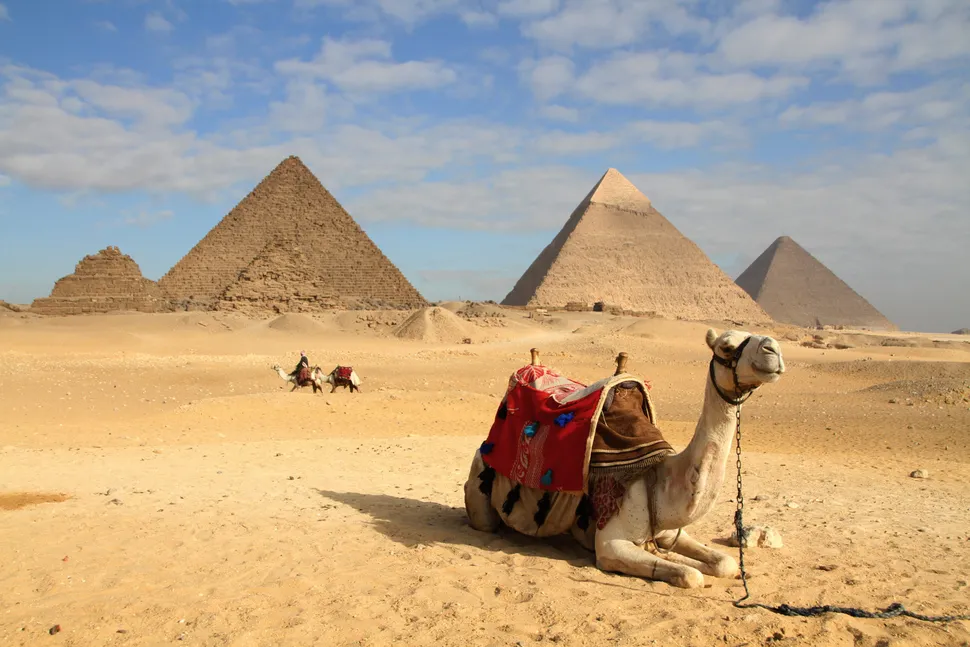Oguz Kaan Kısa · April 15, 2021

Everyone knows the Egyptian pyramids, but did you know that they were built as tombs for pharaohs and royal families to connect them to the sun god Ra? If you're wondering, more than 130 pyramids have been discovered so far. Have you ever imagined how big these pyramids are? Imagine a structure six times heavier than a modern 100-story skyscraper. The first pyramid was built in 2600 BC by the Egyptian architect Imhotep. The leader, called Imhotep, was again the first doctor, engineer and architect known in Egyptian history.
Contrary to popular belief, the pyramids were not actually built by slaves. The people working in these structures have made three-month contracts, received their salaries, and in addition to these, they have become highly respected even though they come from quite modest places.
These people were so admired that if someone dies while working on construction they have the right to be buried in one of the tombs in the Giza necropolis (cemetery). In this way, they were closer to the pyramids of the pharaohs, which were considered a great honor in their time.
Cats were not pets at the time, but were considered sacred. For the ancient Egyptians, having a purring cat at home would have guaranteed good luck.Many people know that the Egyptians worshiped cats. However, most of these people find it difficult to understand the degree of respect for these animals. Because Egyptian culture sees these animals as the reincarnation of the god Ra. His role was to kill the serpent Apophis (the embodiment of chaos and evil).
Women in ancient Egypt had far more rights than their contemporaries, the Roman or Greek societies. In fact, there was divorce in Egyptian culture. In addition, women also had the right to inherit as in Celtic culture. Negative situations such as harassment against women were among the behaviors that were not accepted and tolerated.
In addition, women could establish their own businesses and operate in many commercial areas. Most of them, of course, focused on health and maternity-related jobs.
Whichever of the sculptures you look at in Ancient Egypt, you will notice that the left foot is always ahead. This is because, in Egyptian culture, the left side is believed to be the side of life, as the heart is located on the left side.
In the attacks on the temples, the enemies of Egypt destroyed the left legs and feet of these structures. Thus, they thought that they symbolically destroyed the "life" of that pharaoh and made him doomed to eternal oblivion.
The tombs created in the name of the pharaohs and nobles during the 18th and 20th reign of Egypt are located in this region. There are over 60 tombs buried in the 16th and 11th centuries BC in the region. While I. Tutmose was the first to be eternal in this area, XI was the last. It is Ramses. The families of the pharaohs were also buried in this cemetery. The region is one of the most visited areas in the country after the Egyptian Pyramids. In addition, there are two sculptures of approximately 3,400 years, which are called Giant Memnon Sculptures.
It is known as the largest river in the world with a length of 6,853 km. It has branches of the Blue Nile, the White Nile and the Atbara River. In addition to Egypt, it irrigates the lands of countries such as Sudan, Burundi, Uganda, Rwanda, Congo, Tanzania, Kenya and Ethiopia. The Nile River, which has been referred to as Egypt's most valuable geographical heritage throughout history, is home to many species. The Nile Crocodile, which can grow by meters and weighs up to 1 ton, is one of them. It is home to hundreds of thousands of creatures such as tortoises, fish and hippo. With organized tours, wildlife on the Nile is observed by millions of people every year.
Since the Egyptians thought that the souls of the deceased people would come back to life in the afterlife, they put great emphasis on mummification to keep their bodies as they were. As a mummification process, all internal organs except the intestines and the heart were taken and placed in canopic jars.
In Africa, in the fertile lands of the Nile River and with many natural beauties, Egypt attracts attention with its culture and beach and diving routes. One of the most curious topics of those who will travel to Egypt is the Egyptian money. The official currency of the Egyptian country is the Egyptian Pound.
The official language of the country of Egypt, which is one of the African countries, is Arabic. Dialect is generally used within the country. The dialect is known as Egyptian Arabic or Egyptian. Saudi Arabic and Bedouin Arabic are among the dialects frequently used in this country.

 Back
BackLet us find your dream university.
